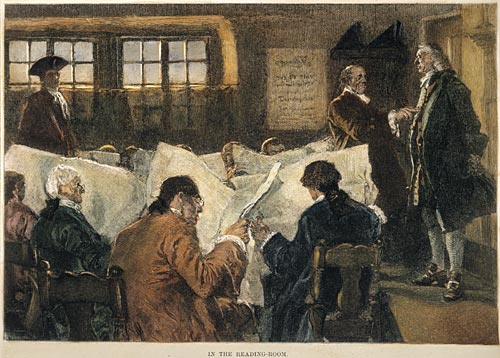The first and governing maxim in the interpretation of a statute is to discover the meaning of those who made it.” –James Wilson, Of the Study of Law in the United States, Circa, 1790
Many Americans today view the Constitution as a “living, breathing” document.
By living and breathing, they mean the Constitution was written as a “dynamic” document; flexible, so it can change with the times. Instead of maintaining a fixed meaning, judges, lawmakers and bureaucrats mold its various clauses and provisions to fit the needs of the day. Woodrow Wilson was one of the first politicians to define and aggressively advocate this idea of a living, breathing document in his book Constitutional Government in the United States, and while stumping on the campaign trail in 1912.
“Society is a living organism and must obey the laws of life, not of mechanics; it must develop. All that progressives ask or desire is permission – in an era when ‘development,’ ‘evolution,’ is the scientific word – to interpret the Constitution according to the Darwinian principle; all they ask is recognition of the fact that a nation is a living thing and not a machine.”
But a living, breathing Constitution is really a dead Constitution.
America’s founding document essentially serves as a contract between the people of the states. Through the Constitution, they formed the Union, set up a general government to administer specific objects and delegated to it specific, enumerated powers.
You can’t have a living, breathing contract.
Think about it. Would you sign a living, breathing mortgage? Would you enter into a living, breathing employment contract? Would you sign a living, breathing agreement with a builder to put an addition on your house?
Of course not! Because you would have no idea what that contract really means.
Contractual provisions have a fixed meaning. When you sign on the dotted line, you expect them to remain constant over time. When disagreements come up, both parties argue their position based on how they understood the contract when they signed it. Nobody would accept a banker saying, “Well, I know the mortgage meant so-and-so, but now it means something different. It’s a living breathing mortgage.”
That’s absurd.
And a living breathing Constitution is no less absurd.
People can only live together and cooperate in a society with an agreed upon, consistently applied set of rules. We call this the “rule of law.” The principle roots itself in the idea that no individual or institution stands above the law, and that rules consistently apply equally to all people in any given situation. Rule of law creates a bulwark against arbitrary power, whether wielded by a totalitarian leader, promoted by mob rule, or exercised by duly elected legislators.
The rule of law requires consistency. Otherwise, government becomes arbitrary. When the limits on government power become subject to reinterpretation by the government itself, it becomes limitless in power and authority.
That’s exactly what we have today. The federal government makes up things as it goes along. The feds claim the power to tell you what kind of light bulb you can use, they force you to buy health insurance, they wage undeclared wars around the world, and they spy on everybody in America — all based on this living, breathing lie.
But how do we know what those enumerated powers really mean? How do we determine the extent of powers delegated?
The only rational way to understand the Constitution lies in an interpretive process known as originalism. To read the Constitution through an originalist framework means we seek to understand how the people understood it at the time. In other words, what they believed they were agreeing to. Otherwise, meaning becomes a moving target, subject to the changes in language and societal assumptions over time.
James Madison asserted that we must view the Constitution in this way in a letter to Henry Lee.
“I entirely concur in the propriety of resorting to the sense in which the Constitution was accepted and ratified by the nation. In that sense alone it is the legitimate Constitution. And if that be not the guide in expounding it, there can be no security for a consistent and stable, more than for a faithful exercise of its powers. If the meaning of the text be sought in the changeable meaning of the words composing it, it is evident that the shape and attributes of the Government must partake of the changes to which the words and phrases of all living languages are constantly subject. What a metamorphosis would be produced in the code of law if all its ancient phraseology were to be taken in its modern sense!”
Understanding the ratifiers’ intent takes some research and digging. On the other hand, some mystical veil of historical fog doesn’t obscure their view of constitutional powers. We have records of the ratification debates and the ratifying instruments themselves. We also have the Federalist Papers and other documents written by supporters used to “sell” the Constitution to ratifying convention delegates, and the population at large. These essays were akin to a window sticker on a used car, explaining exactly what the people were “buying.” We have the numerous letters and essays written by opponents of the Constitution, along with letters written by framers and ratifiers. All of these sources help guide our understanding. With a little work, you will find the original meaning of the Constitution easily determined and understandable. Thomas Jefferson himself advocated this process of constitutional interpretation.
“On every question of construction let us carry ourselves back to the time when the Constitution was adopted, recollect the spirit manifested in the debates, and instead of trying what meaning may be squeezed out of the text, or intended against it, conform to the probable one in which it was passed.”
It’s time to kill this idea of a living breathing Constitution before it kills the Constitution.




